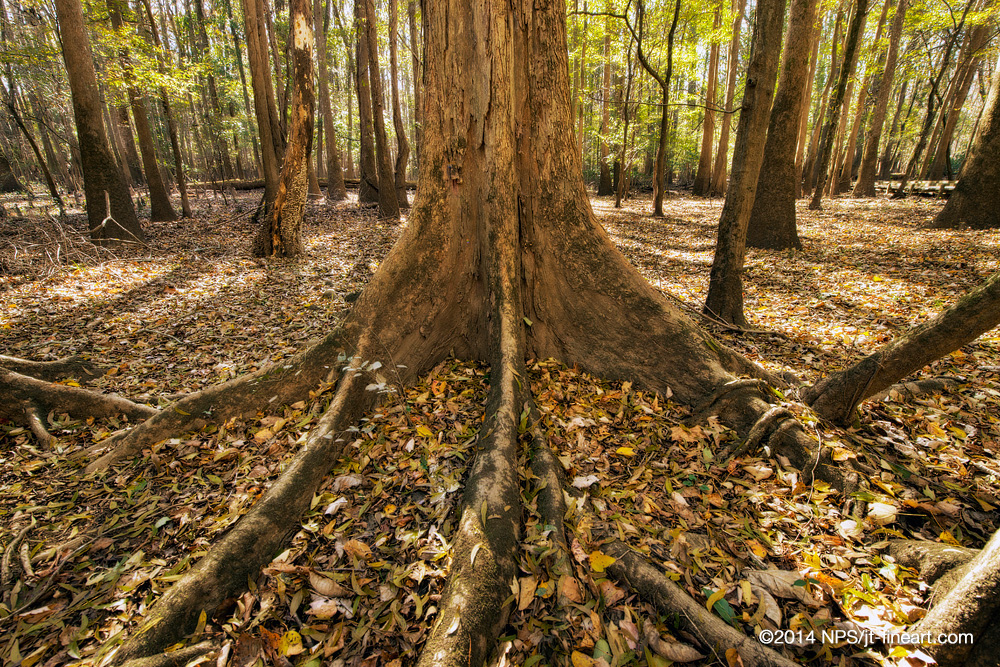|
You are viewing ARCHIVED content published online before January 20, 2025.
Please note that this content is NOT UPDATED, and links may not work. For current information,
visit https://www.nps.gov/aboutus/news/index.htm.

NPS Photo/jt-fineart.com
Contact: Lauren Gurneiwicz, 803-647-3969 Congaree National Park Superintendent Tracy Stakely announced the conversion of approximately 6,690 acres of park land from "potential" wilderness to wilderness.The land was originally labeled "potential' wilderness in October 1988.The conversion was accomplished via publication of a notice in the Federal Register last month. "As we celebrate the 50th anniversary of the 1964 Wilderness Act, Congaree National Park also celebrates this addition to our designated wilderness land," Stakely said. "Wilderness really is closer than you think. The wilderness at Congaree provides exceptional opportunities for solitude and recreation close to a major metropolitan area. Visitors can get away from it all at Congaree by observing wildlife, birding, hiking, camping, paddling and more. I encourage visitors from all walks of life to take the opportunity to experience the wilderness resources here." Federal law authorizes the Secretary of the Interior to convert "potential" wilderness to wilderness when all uses prohibited by the Wilderness Act (Public Law 88-577) have ceased.The park now manages and protects approximately 21,700 acres as wilderness. That is about 82 percent of the park's total acreage.An additional 60 acres of "potential" wilderness will remain in the park to be converted at a later date, as appropriate. In 1988, Public Law 100 - 524 (102 Stat. 2606) designated approximately 15,010 acres of Congaree National Park (then known as Congaree Swamp National Monument) as wilderness. The law also designated more than 6,800 acres, as "potential" wilderness. The Wilderness Act, signed into law in 1964, established the highest level of conservation protection for federal lands. It prohibits permanent roads and commercial enterprises, except commercial services that may provide for recreational or other purposes of the Act. Wilderness areas generally do not allow motorized equipment, motor vehicles, mechanical transport, temporary roads, permanent structures or installations. Visitors can engage in non-motorized recreation in wilderness areas, including hiking, fishing, and camping. Congaree National Park protects the largest intact expanse of old growth bottomland hardwood forest remaining in the southeastern United States. Located just miles from the capital city, visitors can explore thousands of acres of federally designated wilderness, hiking and canoe trails, campgrounds and a visitor center. You can also connect with Congaree on Facebook, Twitter and Instagram. |
Last updated: April 14, 2015
